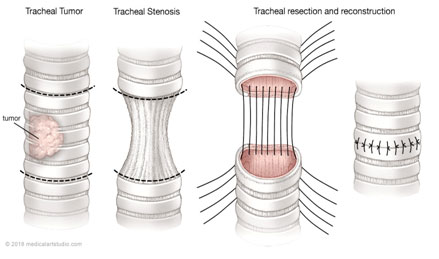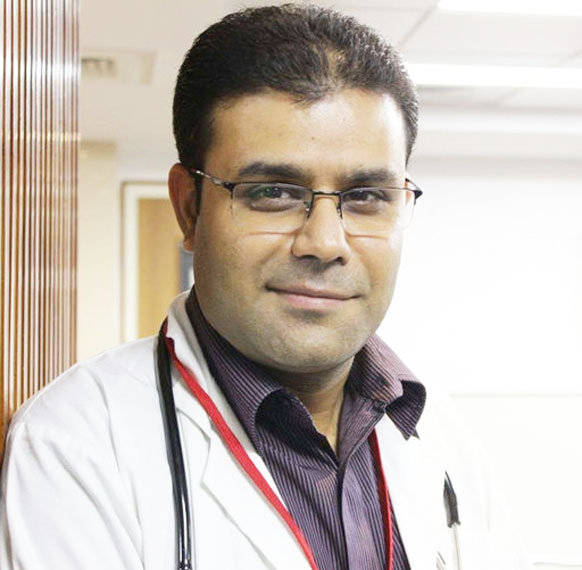The trachea, commonly called the windpipe, is the airway between the voice box and the lungs. When this airway narrows or constricts, the condition is known as tracheal stenosis, which restricts the ability to breathe normally.
There are two forms of this condition:
- Acquired - caused by an injury or illness after birth
- Congenital - present since birth
Most cases of tracheal stenosis develop as a result of prolonged breathing assistance known as intubation or from a surgical tracheostomy.
Causes and Risk Factors
Though rare, tracheal stenosis may be present at birth. More commonly, the condition is the result of an injury or illness, such as
- An external injury to the throat or chest
- Infections of a viral or bacterial nature, including tuberculosis
- An autoimmune disorder such as sarcoidosis, papillomatosis, granulomatosis with polyangitis and amyloidosis.
- Tumors, benign or malignant, which may press against the trachea, thereby restricting air flow
- Occasionally, tracheal stenosis may develop after radiation therapy to the neck or chest
Symptoms
The symptoms of tracheal stenosis are similar to those of other conditions so it is important to see physician, particularly if the patient has experienced an injury to the throat. In addition to a feeling of fatigue or a general feeling being unwell (malaise), the symptoms of tracheal stenosis typically are:
- Wheezing, coughing or shortness of breath, including difficulty breathing
- A high-pitched squeal coming from your lungs when inhaling
- Frequent bouts of pneumonia or upper respiratory infections
- Asthma that doesn't respond well to treatment
- Chest congestion
- Pauses in breathing (apnea)
- A blue color in the skin or mucous membrane of the mouth or nose.
Diagnosis
A medical evaluation including a health history and special testing will help your otolaryngologist diagnose the cause of your tracheal stenosis. One or more of the following tests may be ordered:
- Lung functioning test
- CT-scan of both your neck and chest
- Chest X-ray
- Endoscopic procedure (bronchoscopy or laryngoscopy)
- Biopsy to check on the malignancy of any tumors or lumps
Treatment
Treatment options, some of which are done using minimally invasive techniques, include:
- Laser surgery, which can remove scar tissue, if that is the cause of the stenosis. This provides short-term relief but usually isn’t a long-term solution.
- Airway stenting, called tracheobronchial stenting, where a mesh-like tube keeps the airway open.
- Widening of the trachea, or tracheal dilation, where a small balloon or dilator is used to expand the airway. This also may not be a long-term solution.
- Full tracheal resection and reconstruction, which may provide long term relief. The damaged section of the trachea, windpipe, is removed and the remaining ends are joined.
Sometimes few tumours arise from the trachea and cause life threatening situation.
This requires complex surgery, which is performed regularly at our centre with good success rates.

Pathological Tracheal conditions and Surgeries being performed

